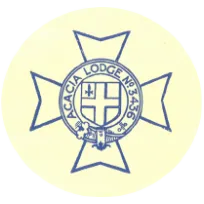Museum Of Freemasonry: Historic Fragments And Their Link To Freemasonry
By Mark Dennis – Curator
In 1940 the German Luftwaffe carpet bombed London in the blitz. Among the historic buildings damaged were the Guildhall of the City of London and St Paul's Cathedral. The Incorporated Society of Musicians Lodge No 2881 presented a set of gavels to the United Grand Lodge of England made from the timbers of St Paul's Cathedral dislodged by an air raid in October 1940 and authenticated them by a silver plaque inscribed with the name of the Dean.
The Lord Mayor of London for 1943-4, Frank Newson-Smith, presented a maul to the United Grand Lodge of England made of oak from the roof of the City of London Guildhall after its destruction in December 1940. This gift, made during wartime, is an expression of defiance and belief in the future – given directly to a museum for display rather than use in the expectation that it would endure. It is not alone, as Edifice Lodge also had a gavel and block made from the timbers.
In 1941, the bombings also claimed the livery hall of the Worshipful Company of Carpenters. The fittings of the Company's Masonic Lodge, Tekton Lodge, were incinerated, but their alms dish survived with one side melted away. Rather than discard it, the Company produced a turned wood support and brought it back into use. Today it is displayed in our North Gallery as an example of Freemasonry's spirit combined with its charitable core.
There are also reminders of previous Freemasons' Halls and even earlier meeting places. The earliest is just a fragment of a wooden beam from the Goose and Gridiron tavern; taken during its demolition in 1896 by the masonic historian G. William Speth. On the one side is pinned a card, originally a passenger's luggage label from South Eastern Railway Cannon Street Station, overwritten 'Beam from Old Goose and Gridiron'. It is the last surviving fragment of the building where Grand Lodge began in 1717 (the pub where the Antients were founded in 1751 survives as a Chinese supermarket in Soho, but that's another story!). When the previous Freemasons' Hall was demolished in the 1920s, an enterprising tyler even cut up one of the bannister rails to make gavels for sale.
Our most recent exhibition, 'Inventing the Future', also features a piece of a famous London landmark. In a display about the legendary history of Freemasonry is a rough ashlar made from the granite of Cleopatra's needle. This is now a much-loved feature of the Thames embankment, but for more than half a century, it was rather an embarrassment since it was gifted to the UK as thanks for defeating the invasion of Ottoman Egypt by French troops in 1801, but shipping costs were not included! In 1877 it finally crossed by sea, funded by Sir Erasmus Wilson, a member of the Lodge of Antiquity No 2 and who presented this ashlar to the lodge.
These are doubtless only a few of the lodge fittings made from historic buildings, and many may still be in use in bringing fragments of our city into the lodges and building a link with the operative stonemasons who created London.



This article is part of the Arena Magazine, Issue 51 December 2022 edition.
Arena Magazine is the official magazine of the London Freemasons – Metropolitan Grand Lodge and Metropolitan Grand Chapter of London.
Read more articles in the Arena Issue 51 here.
